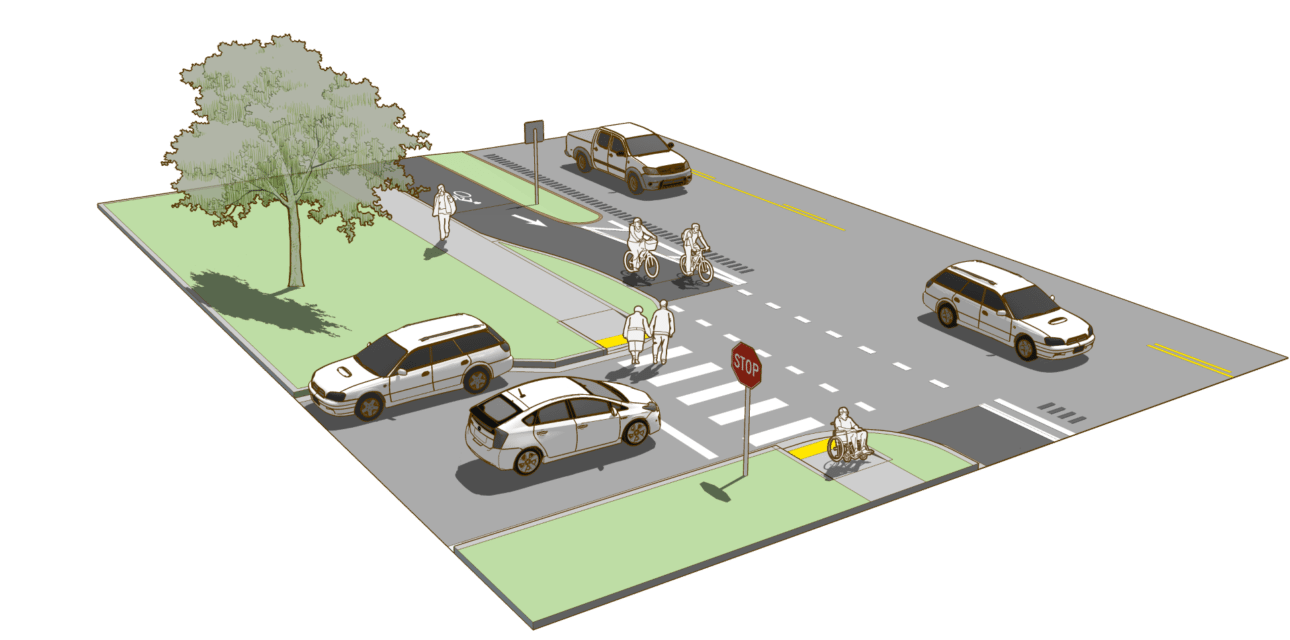
A Comprehensive Bicycling Network
Bikeways come in multiple forms, including on-street bikeways and off street facilities. Bikeways should form a logical network of facility types that serve transportation and recreation functions and appeal to the full range of users. Characteristics of a high-quality biking network include:
- Connectivity: Network serves key destinations and districts. Bikeways should be spaced a half-mile apart at most, forming a minimum grid.
- Convenience: System should minimize delay and out-of-direction travel, avoid unnecessary hills, allow for bicyclists to pass each other, and provide wayfinding guidance to other bikeways and popular destinations.
- Safety: Design and maintenance should minimize the potential for bodily harm by providing adequate operating space, ensuring bicyclist visibility at intersections, and creating a predictable environment for all path and/or road users.
- Comfort: The network should not induce stress. On-street bikeways should provide dedicated space for bicyclists or create a traffic-calmed bicycle priority environment. Off-street bikeways should be adequately buffered from fast-moving vehicles and include enhanced crossing treatments at roadway intersections.
- Inclusion: The best cycling networks enable riders of all ages and abilities. They facilitate safe, comfortable, and convenient routes for all community members, and are supported by policies, practices, and programs to encourage people to cycle. Alta is a leader in planning all ages and abilities facilities.
- Smooth transitions: Bicyclists should be able to move easily from on-street facilities to off-street pathways and vice versa. Bicyclists should not be subject to unnecessary conflicts, such as navigating large parking lots to get from a pathway to bike parking.
Separated bike lanes provide increased safety and comfort for bicyclists beyond more traditional facilities like bicycle routes or bicycle lanes. Separated bikeways are most appropriate on streets where higher traffic volumes and speeds warrant greater separation. By separating bicyclists from motor traffic, “protected” or physically separated bike lanes can offer a higher level of comfort than conventional bike lanes and are attractive to a wider spectrum of the public. Intersections and approaches must be carefully designed to promote safety and facilitate left-turns for bicyclists from the primary corridor to cross street.
Separation types range from simple, painted buffers and flexible delineators, to more substantial separation measures including raised curbs, grade separation, bollards, planters, and parking lanes. These options range in feasibility due to roadway characteristics, available space, and cost. In some cases, it may be possible to provide additional space in areas where pedestrian and bicyclists may interact, such as the parking buffer, or loading zones, or extra bike lane width for cyclists to pass one another.
Barrier types appropriate for retrofit projects:
- Parked cars
- Flexible delineators or bollards
- Planters
- Parking stops
- Concrete barrier
Barrier types appropriate for reconstruction projects:
- Curb separation
- Landscaped Medians
- Raised protected bike lane with vertical or mountable curb
- Pedestrian safety islands
One-way physically separated bike lanes
One-way protected bicycle lanes are physically separated bike lanes that allow bicycle movement in one direction on one side of the street. Separation for protected bicycle lanes is provided through physical barriers between the bike lane and the vehicular travel lane. In areas with high bicycle volumes or uphill sections to facilitate safe passing behavior, the minimum desired width is 7 feet. Where possible, physical barriers such as bollards or removable curbs should be oriented towards the inside edge of the buffer to provide as much extra width as possible for bicycle use.
Benefits include:
- Dedicated and protected space for bicyclists makes it an attractive facility for riders of all levels and ages
- Lower implementation cost compared to street reconstruction by making use of existing pavement and drainage and by considering using a parking lane as a barrier
- Reduces or eliminates risk and fear of collisions with opening parked car doors and overtaking vehicles
- Discourages double parking in the bike lane
- Improves perceived safety for bicycle riders
Two-way physically separated bike lanes
Two-way protected bike lanes or “cycle tracks” are physically separated bike lanes that allow bicycle movement in both directions on one side of the street. Two-way protected bicycle lanes on two-way streets are not as desirable due to challenges for roadway user expectancy at intersections and driveways. Two-way protected bike lanes are typically placed along streets where more destinations are on one side thereby reducing the need to cross the street and along streets with few conflicts such as driveways or cross-streets on one side of the street. A two-way protected bike lane may be configured at street level or as a raised protected bike lane with vertical separation from the adjacent travel lane. The desired width is 12 feet in areas with high bicycle volumes or uphill sections to facilitate safe passing behavior.
Benefits include:
- On one-way streets, increases the density of the bicycle network, improving connectivity and directness of bicycle routes
- When connecting to shared use path facilities, provides an extended trail-like experience
- Dedicated and protected space for bicyclists makes it an attractive facility for riders of all levels and ages
- Lower implementation cost compared to street reconstruction by making use of existing pavement and drainage
- Reduces or eliminates risk and fear of collisions with opening parked car doors and overtaking vehicles
- Discourages double parking in the bike lane
- Improves perceived safety for bicycle riders
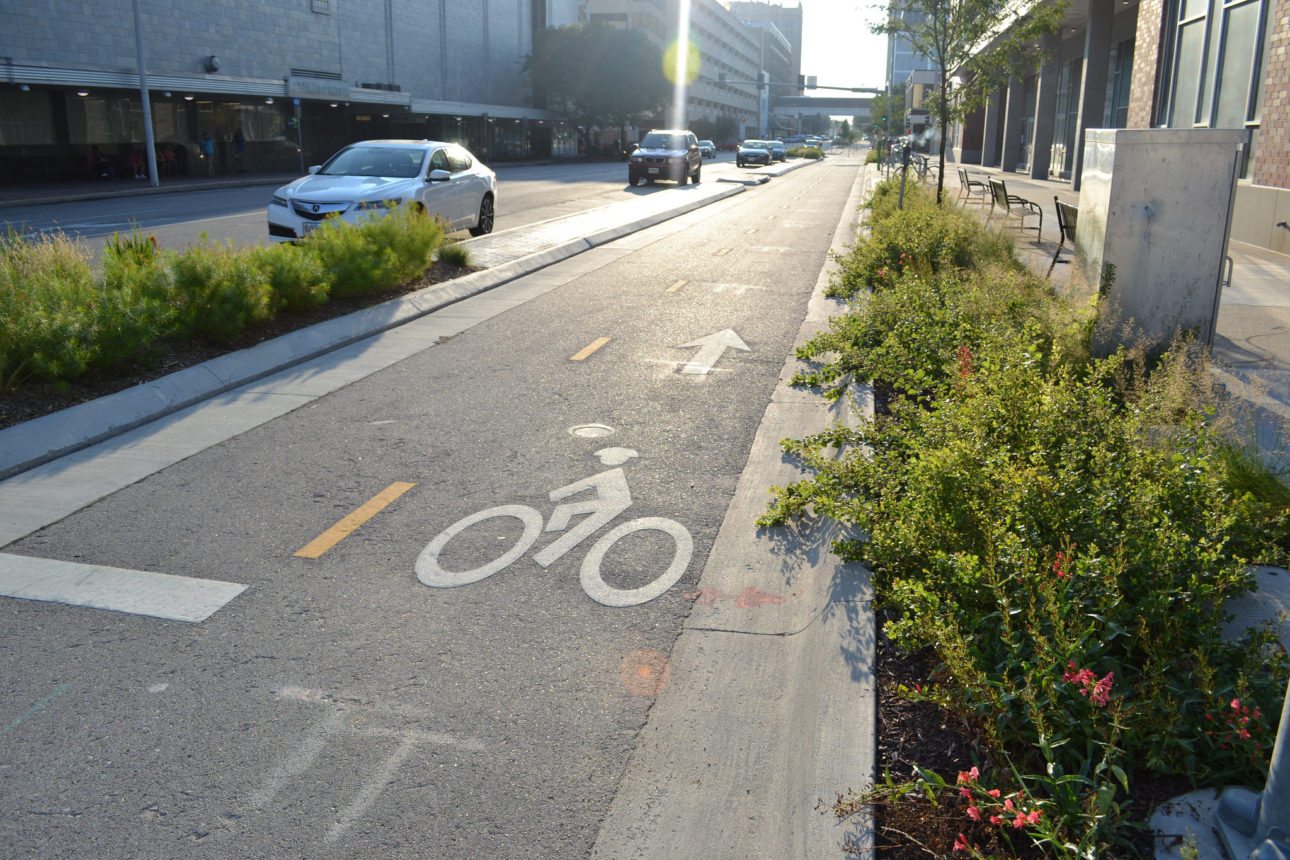
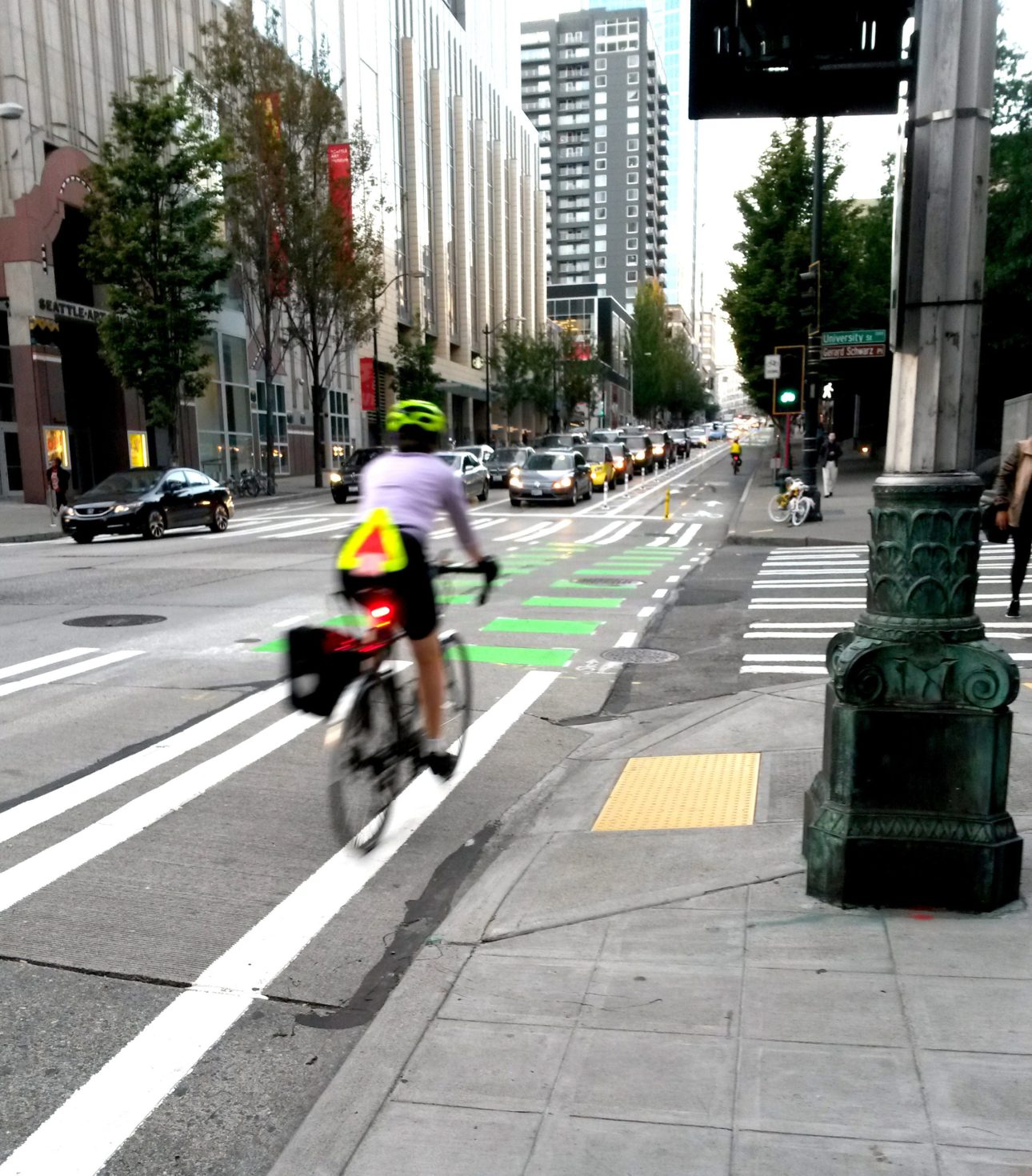
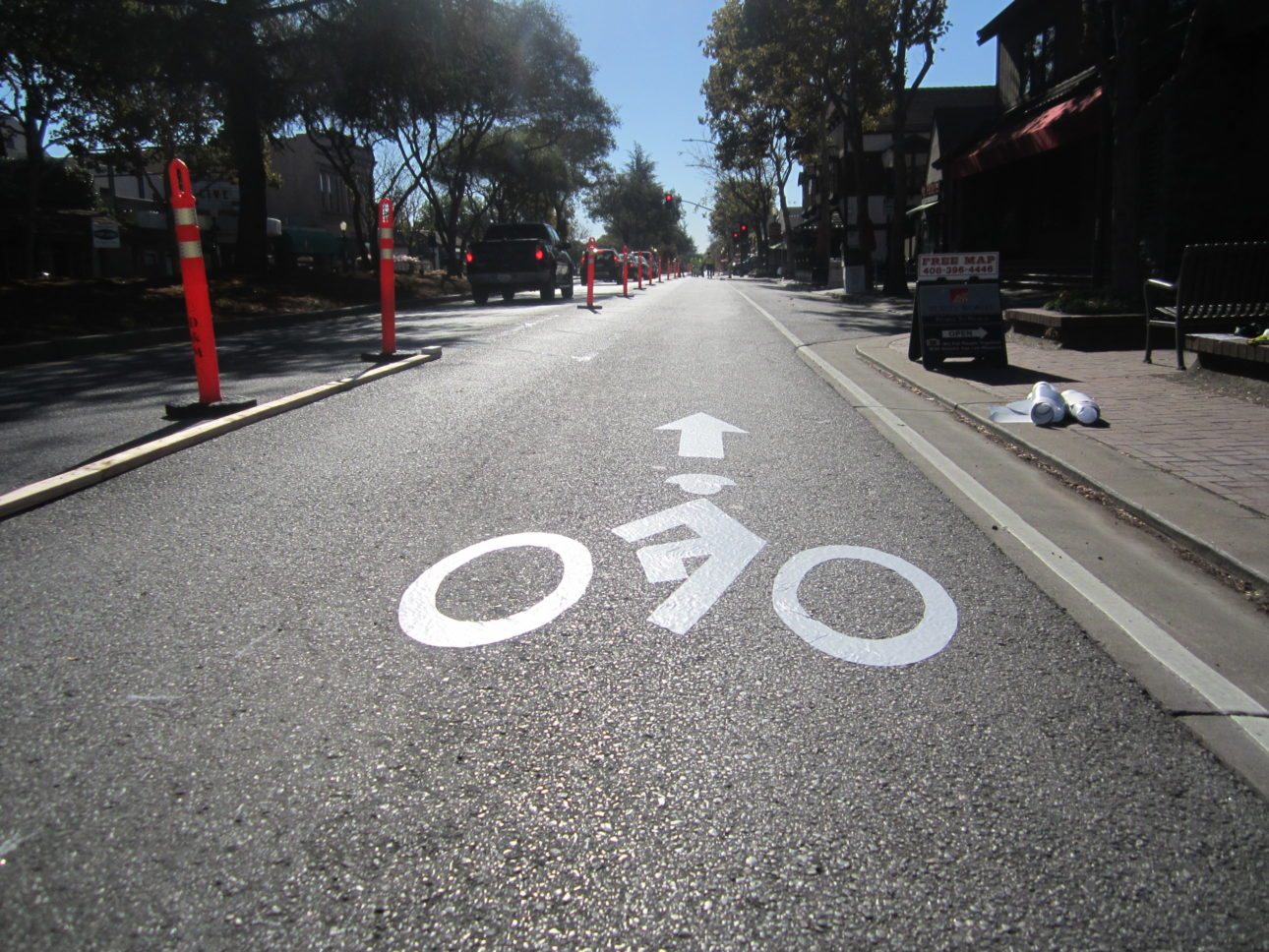

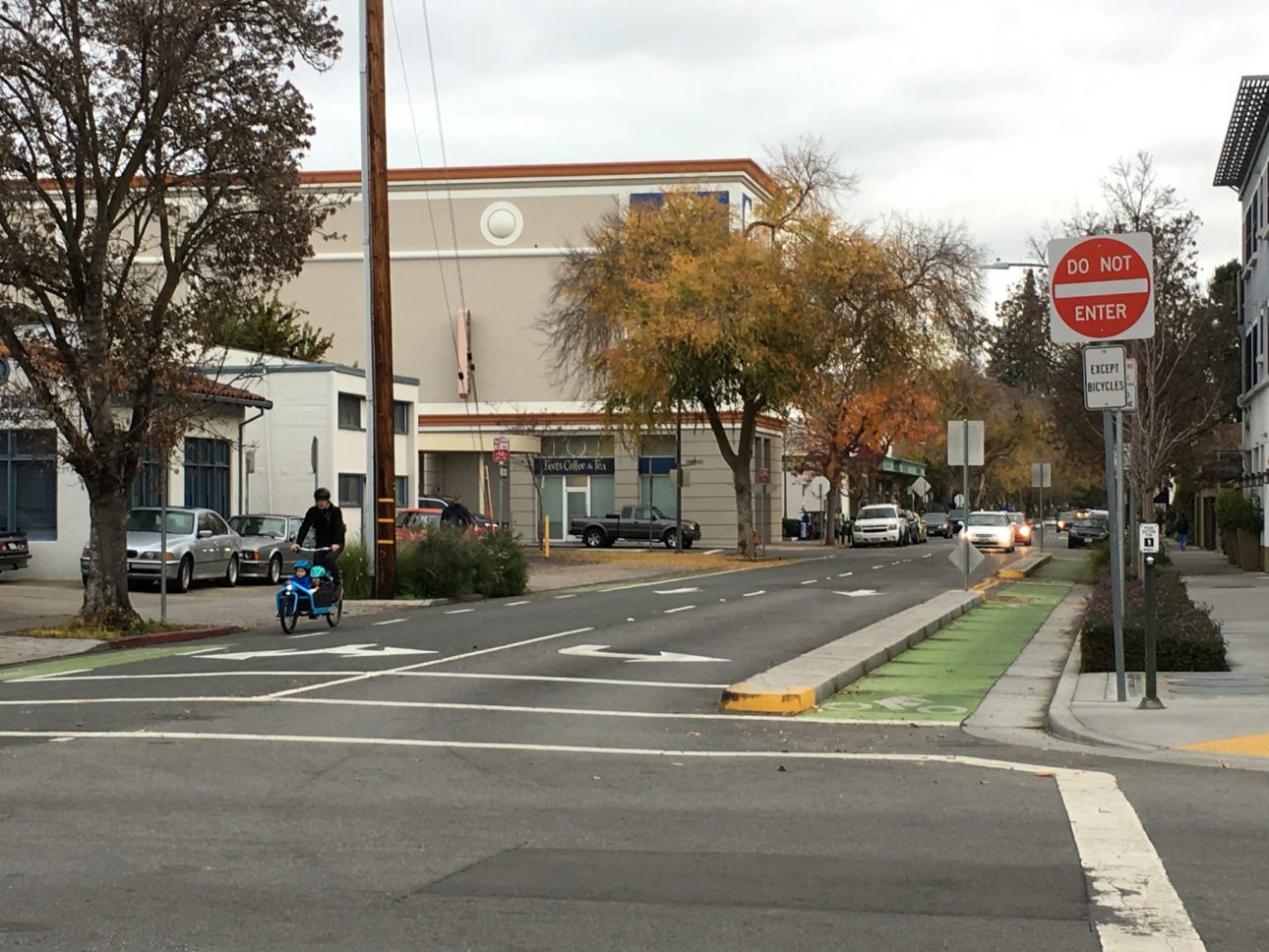
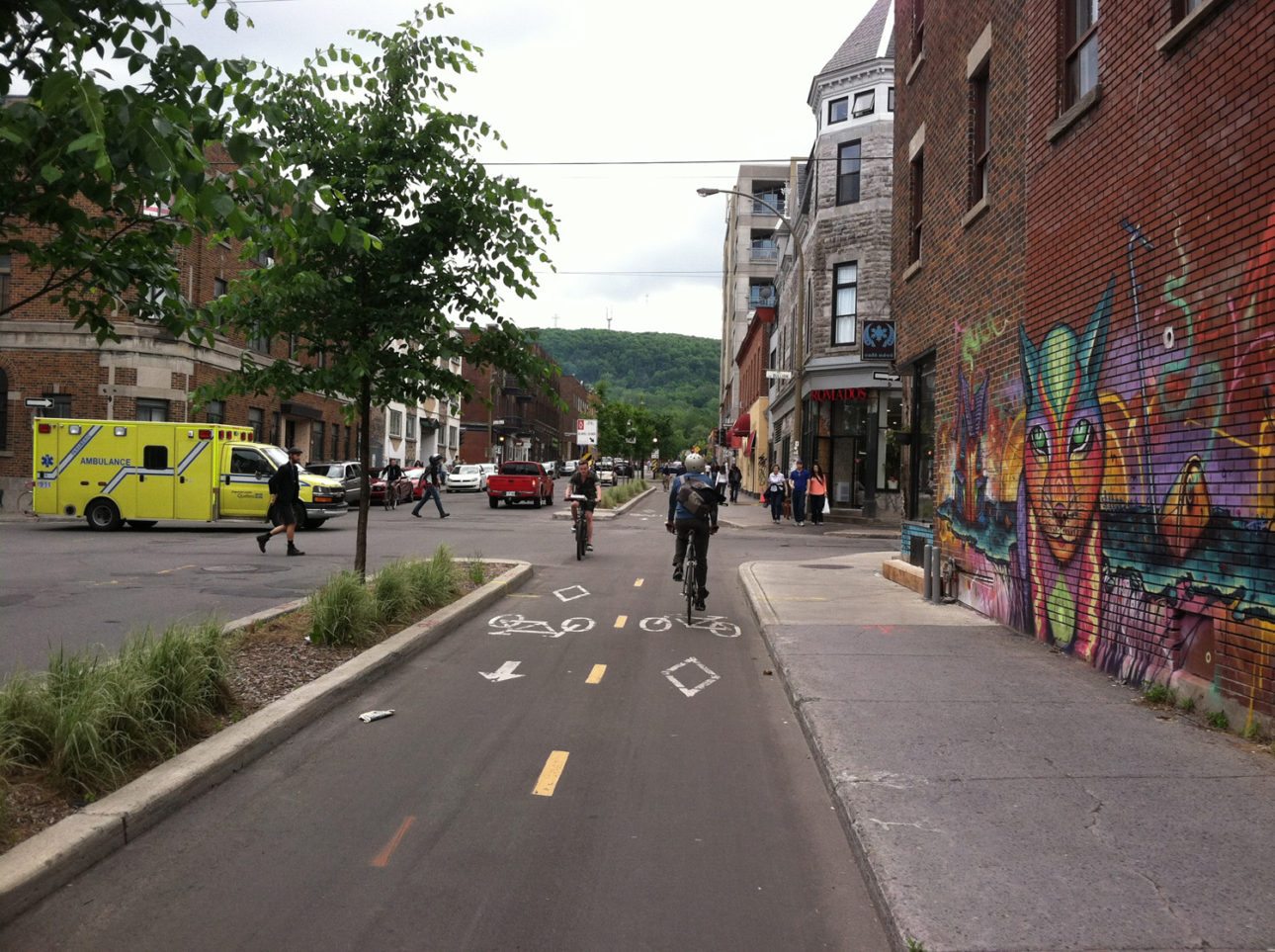
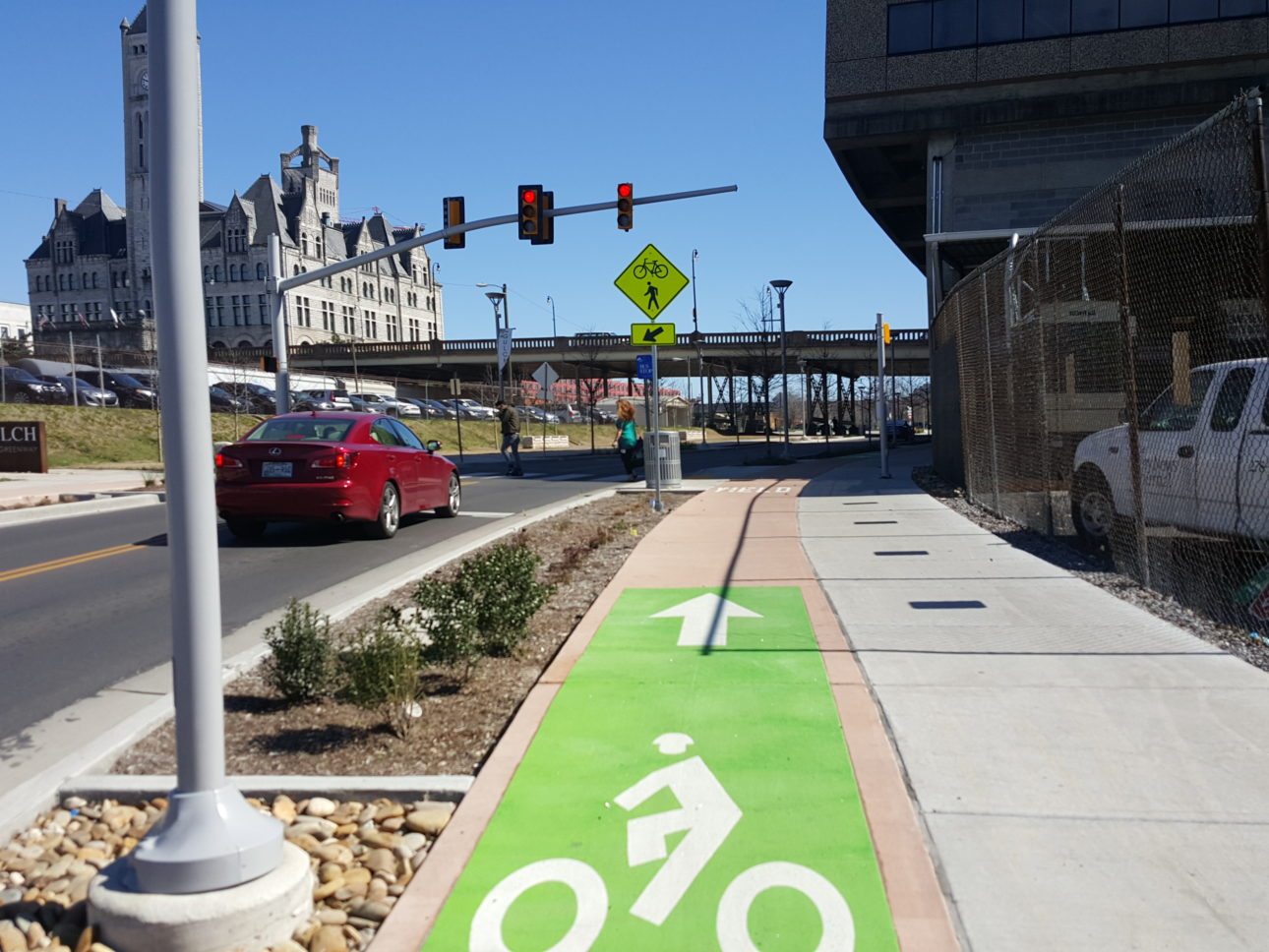

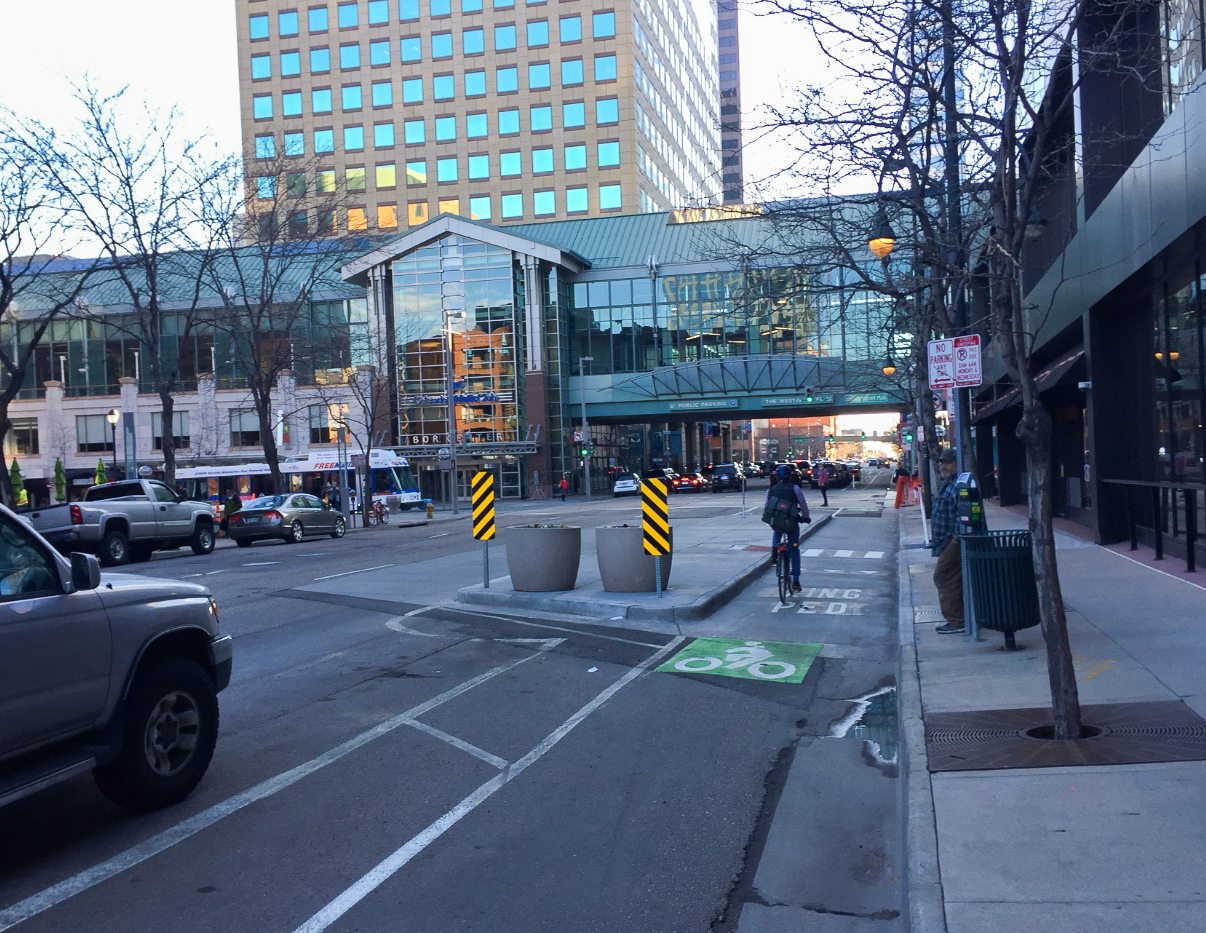

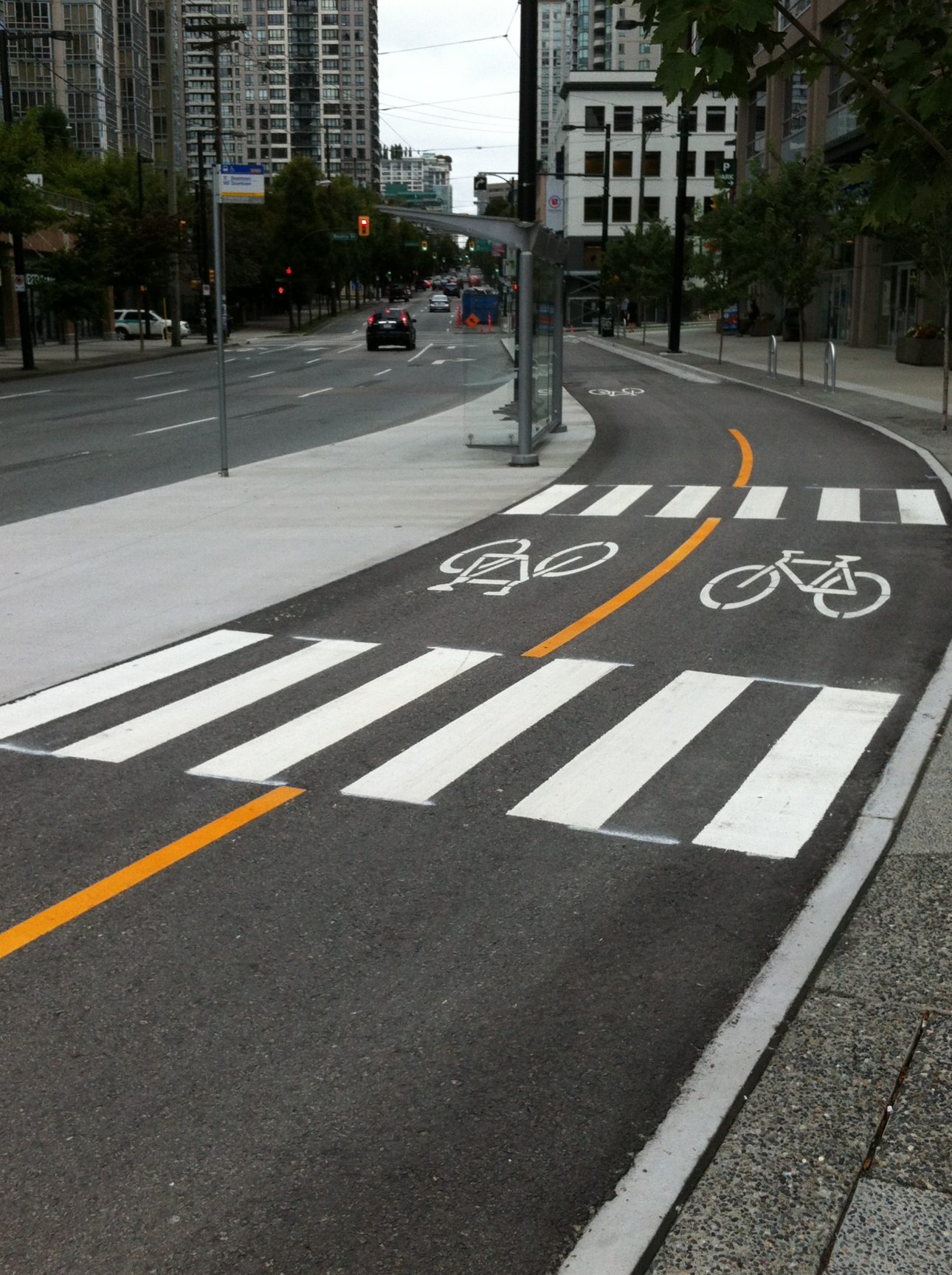
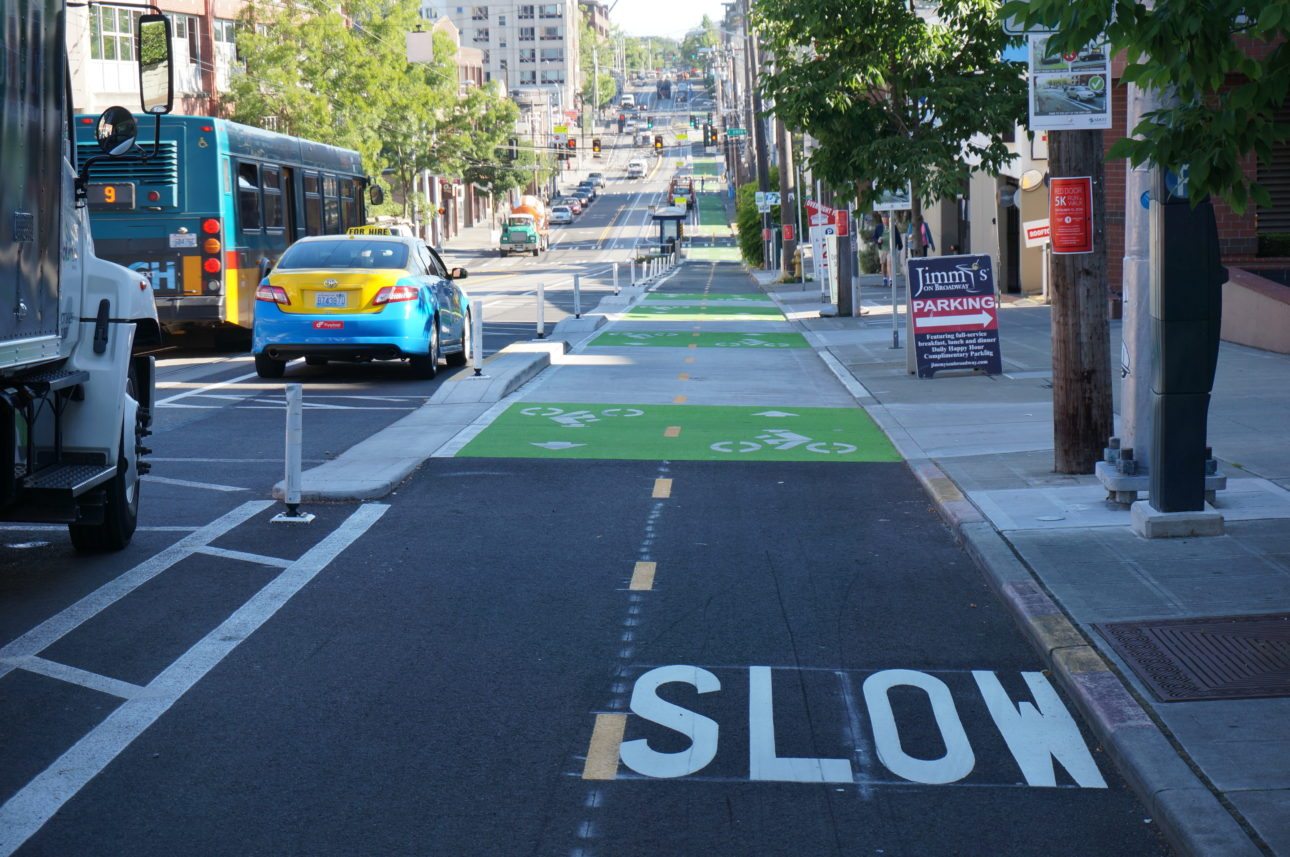
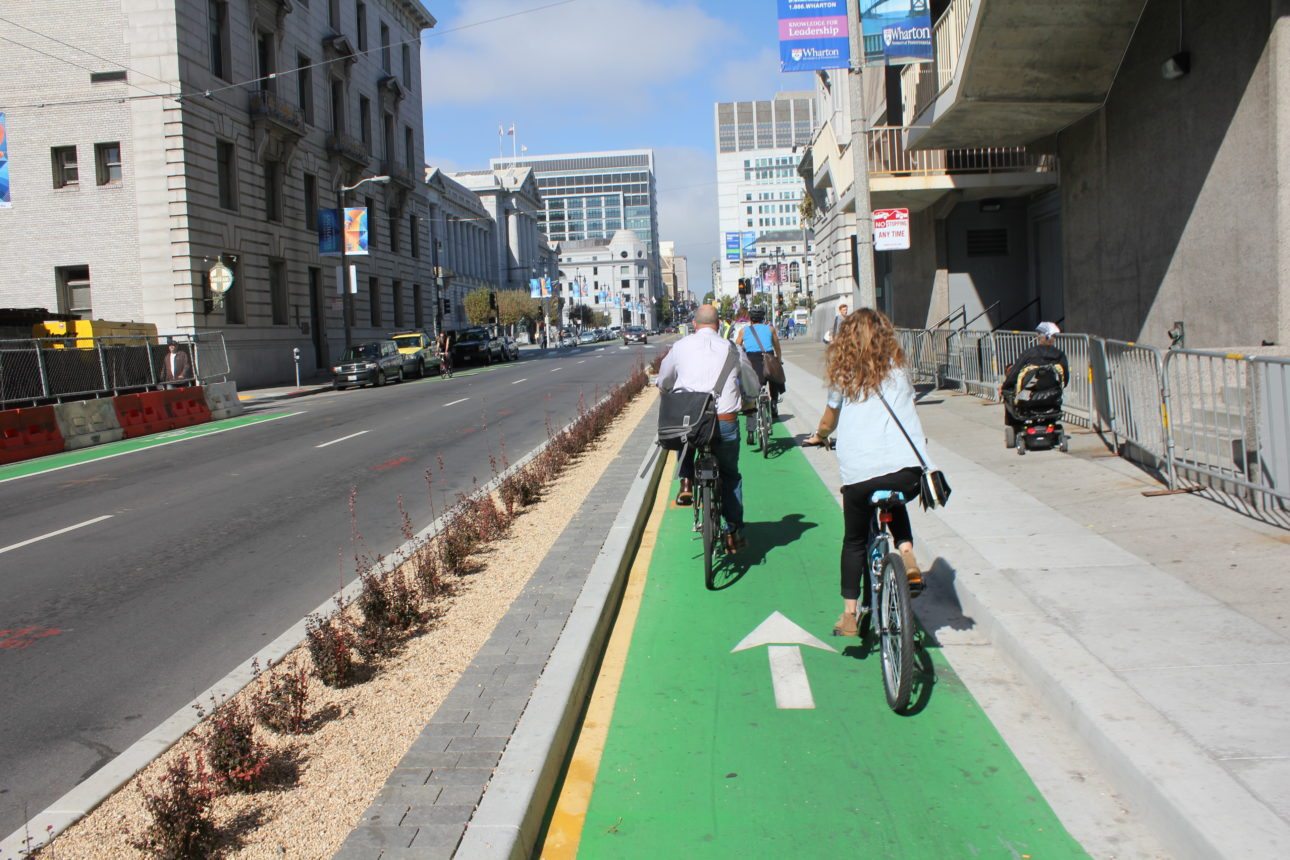

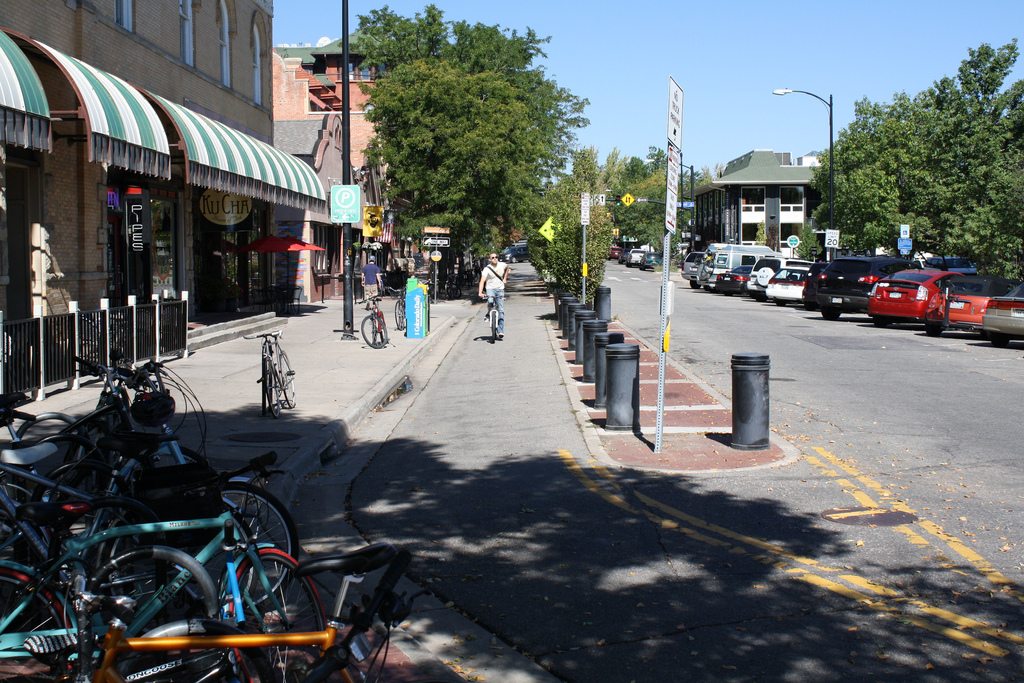



Separated bike lanes in US cities have resulted in a significant boost to the local economy, compared to similar streets nearby.
- Philadelphia, San Francisco, and Washington D.C. reported a 100% increase in bike traffic with the implementation of protected bike lanes
- Businesses along New York’s 9th Avenue protected bike lane had a nearly 50% increase in sales
- In Portland, people who traveled to an urban shopping area by bike spend 24% more per month than those who traveled by car
Separated bike lanes increase bicyclists’ comfort and safety, attracting new riders:
- Ridership increased by 55% in Chicago, on the Kinzie Street protected bike lane
- Ridership increased by 40% in Washington DC
- Ridership increased by 28.5% in New York City
- 86% feel safe or very safe, compared to only 17% in traditional bike lanes
- 49% consider driver behavior to be safer around protected bike lanes
Separated bike lanes decrease motor vehicle speeds, leading to fewer fatal/serious crashes:
- 75% of motorists exceeded the speed limit before, and only 20% after, in New York City
- Average motorist speed was 34 mph before, and only 27 mph after, in New York City
- 66% of motorists exceeded the speed limit before, only 26% after, in Washington DC
- Average motorist speed was 29 mph before, and only 22 mph after, in Washington DC
Separated bike lanes provide safety in numbers:
- Repeated studies of crash rates in locations across the globe have concluded that the risk of injury or death from crashes with motor vehicles declines as ridership increases
